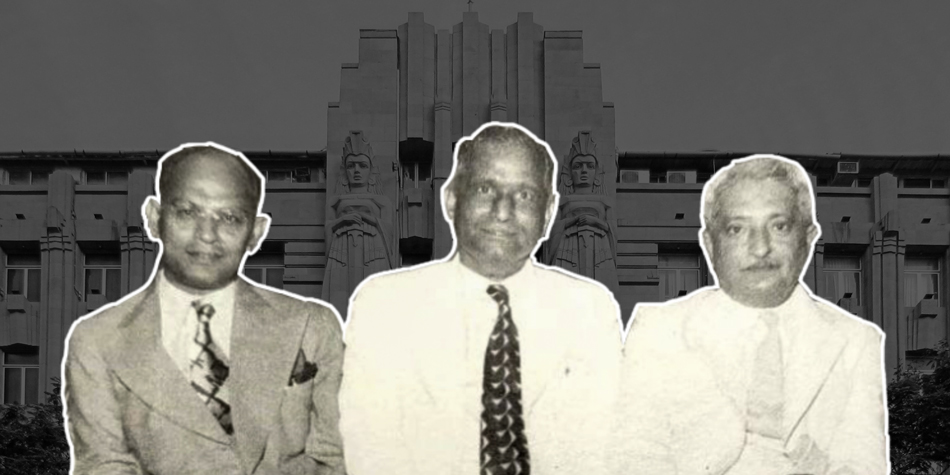Established in 1932, Master, Sathe & Bhuta are believed to be the first all-Indian led architectural firm. Founded by Chimanlal M. Master, Laxman Vishnu Sathe and Gopalji Mulji Bhuta, the firm is known for a wide variety of projects, especially several office buildings that have acquired an iconic status in Mumbai’s skyline. They were arguably one of the biggest firms during the 1930s and 40s. The imprint of their works carried an emerging but strong ‘swadeshi’ identity, as independence from British colonial rule seemed imminent. Typically their office buildings sat on a wide footprint, clad in Malad stone, making them grand and solid properties that generated trust among customers and passersby. Each of their properties also responded to the surrounding climate, enjoying protection from the tropical sun and Bombay’s harsh monsoons, through choices in fenestration.
Intricate sculptures and figurines, depicting narratives significant to the local context, were often featured in their buildings. Dressed in traditional attire, these figures often glorify pastoral life, perhaps in an attempt to adopt the ideals of honesty represented by the humble Indian hinterlands. For young students graduating from Sir J.J. School of Art, which was the only school of architecture in Asia at the time, the practice of Master, Sathe & Bhuta became a springboard to begin their careers. Along with Gregson, Batley & King, this was the firm that nurtured and trained the earliest generation of modern Indian architects, who later established eminent bodies of work. Passing through this illustrious studio have been names of architects like Charles Correa, Vaman S. Gore, Dattatraya Gangadhar Karanjgaokar, Balchandra Kshirsagar, Arvind Talati, and more.
Their practice extended beyond Bombay, and across typologies, with works in New Delhi, Ahmedabad, Patna, Goa, Shillong and Poona. The burgeoning middle class in India’s cities in the early 20th century, generated a new coterie of clients, especially for homes. Master, Sathe & Bhuta were patronised by them all. Among prominent clients were the Mafatlal family, the Mathuradas Vissanji family, several newly established insurance firms, the Reserve Bank of India, and many others.
In this conversation with Art Deco Mumbai, Shrikant Sathe (born 12 October 1934), son of founding partner Laxman Vishnu Sathe, shares tales from the office of Master, Sathe & Bhuta. An architect himself, Mr Sathe began his training with his father’s firm in 1953, becoming partner in 1962 (by then, the firm was called Master, Sathe & Kothari, after Bhuta’s departure). A decade later, in 1975, he founded his own firm – Sathe & Associates. With over 200 projects to his name, Mr Sathe too boasts of an exceptional career. Here he speaks of the origins of Master, Sathe & Bhuta, what its founders were like at work and otherwise, and how the architectural profession became formalised in India. Excerpts:
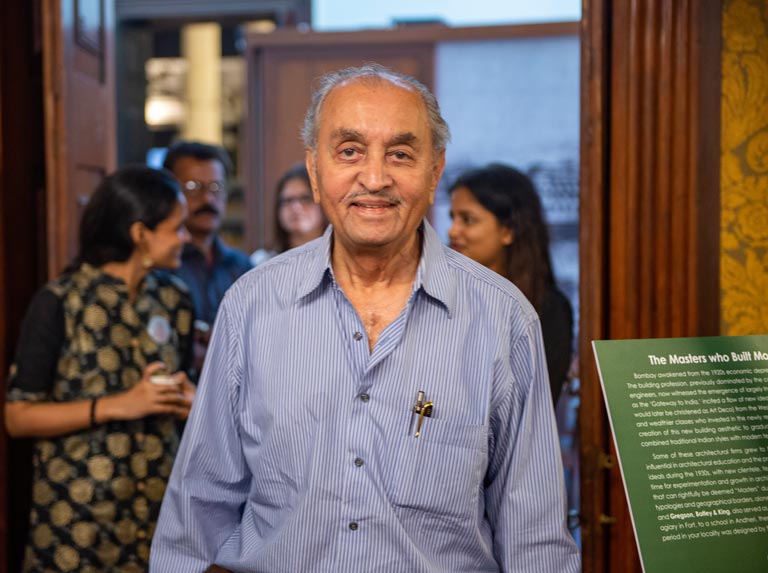
What are your memories of how the firm was established? How old were you at that time?
I finished my schooling and then joined J.J. College of Architecture. I had an interest in architecture right from my childhood, and when I joined the firm it was already established. It started in May 1932 as Master, Sathe & Bhuta. [Chimanlal M.] Master was an independent practitioner with another firm, and my father also worked elsewhere. Both of them had a job in Ahmedabad in those days, and used to travel by train. It used to take 18-20 hours to travel from Bombay to Ahmedabad. Master used to carry all his food and water, and my father, coming from Sawantwadi [a region in interior Maharashtra] was not bothered with carrying anything. So they met on these travels and started talking about joining hands. At the same time, Bhuta, my father’s classmate from J.J., had gone to Shillong for a job, where he caught malaria and had to return to Bombay. After recovering from the fever, he was staying with my father in his Girgaon chawl before heading back to Shillong. My father asked if he would like to join the firm, and that is how all three of them came together as Master, Sathe & Bhuta.
And they were from which college?
Well, Master did his graduation from London, whereas my father did it from J.J. College, J.J. School of Art in those days, as did Bhuta. In those days there was a government diploma first in Bombay, and then they had to appear for A.R.I.B.A. (Associates of the Royal Institute of British Architects), which was an examination taken in the United Kingdom. The interviews and vivas were done here, but all the drawings used to go to the UK, for getting your associateship. That’s how they became A.R.I.B.A., after this government diploma [at J.J.].
And what were the specialties the three would focus on within the firm?
You see, Master was also a lawyer or had done accountancy. So he was very good at preparing the quantity surveying job, or bill checking, preparing the specifications for the buildings. He did all the tender work, as well as checking all the contractors bills. My father was very good at doing the drawings, so he would look after all the detailing and designing for all the jobs. Bhuta had a good rapport with other people, and was very good in approaching the client or getting the job.
As more and more work started coming in, they needed help. In those days, J.J. School of Art was the only school for architecture in all of Asia. All the students would join architectural firms following graduation, and some would join foreign firms too. But Master, Sathe & Bhuta being the first firm founded by Indian architects became a draw for many students. It was during the independence movement. People had that idea in their mind – that this is an Indian architects’ firm.
Who was the most creative of the three?
Most creative, I would say my father was. If the employees had some ideas, they would openly discuss it with senior partners. There were very good employees in those days, very well known architects had joined our firm. In the 1940s there was one architect, D.G. [Dattatraya Gangadhar] Karanjgaokar who was very good. He was a fine artist.
He was the main person who further developed my father’s idea when they designed the New India Assurance building on M.G. Road, Fort. The company had just started, and its directors had ideas about providing insurance for the Indian lower classes. My father suggested to Karanjgaokar to add decoratives on the building keeping this theme of the company in mind. If you see the building, you will see all these motifs have been brought out in bas-relief, which was sketched by Karanjgaokar. The stonework and carving was done by [Narayan Ganesh] Pansare, who was a very good sculptor in those days. But the main idea and the drawings were given to him by our office.
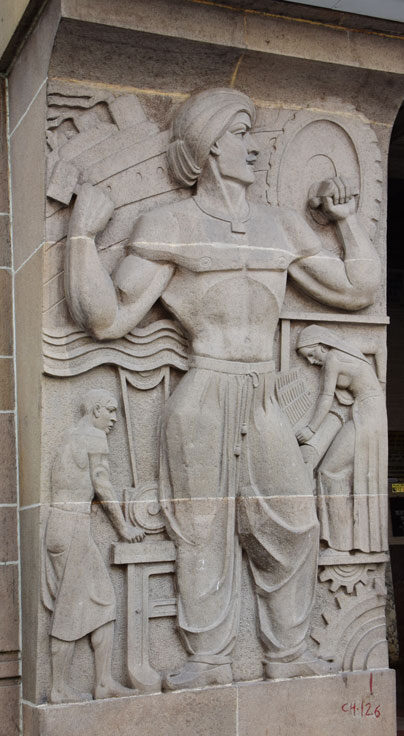
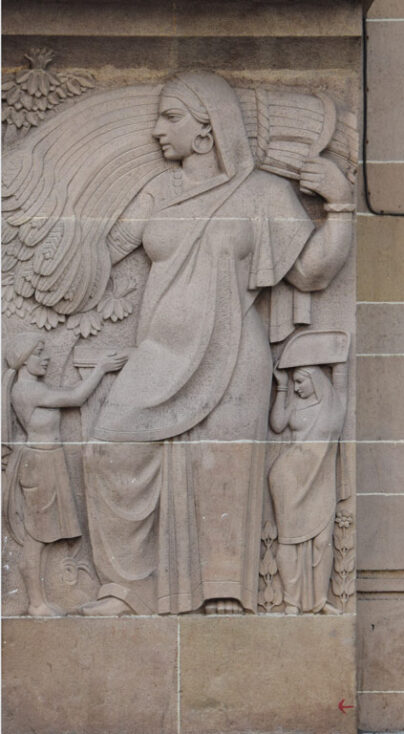
According to you, which was the first major work that got them recognition?
Well I would say, the New India Assurance building was one of the more appreciated by the general public. The Lakshmi Insurance building [on P.M. Road, Fort] was another one. That was another insurance company which had recently started at the time. The name itself suggested it was more for financial things, because of the word “Lakshmi” [Hindu goddess of wealth]. They thought of having a Lakshmi statue on top of the building, to depict its name. So the themes were picked up from the names of the company and the buildings.
There is a little story behind this statue. The building is about six floors high, and on top there was a small tower, on top of which the Lakshmi statue, which is about 18 feet high, was to be installed. In those days, statues were not made from stone, they were made from bronze.
So it’s a bronze statue?
It’s a bronze statue, and even today it is in good shape. That whole statue was manufactured in the workshop and brought to site as a single piece. It was kept on the ground. That being the main thoroughfare in those days, the general public passing by would comment: “Oh how are they going to raise this statue up?” Because in those days there were no cranes or mechanical things.
On a Saturday, the work was started to lift that statue up using a pulley and wooden shafts. This was very common on ships. On Monday morning, it had already been erected. People thought the statue had been taken back or something. Then they looked up and saw the statue had already been installed. That’s the story of that statue, and even today it gives a wonderful skyline to the area.
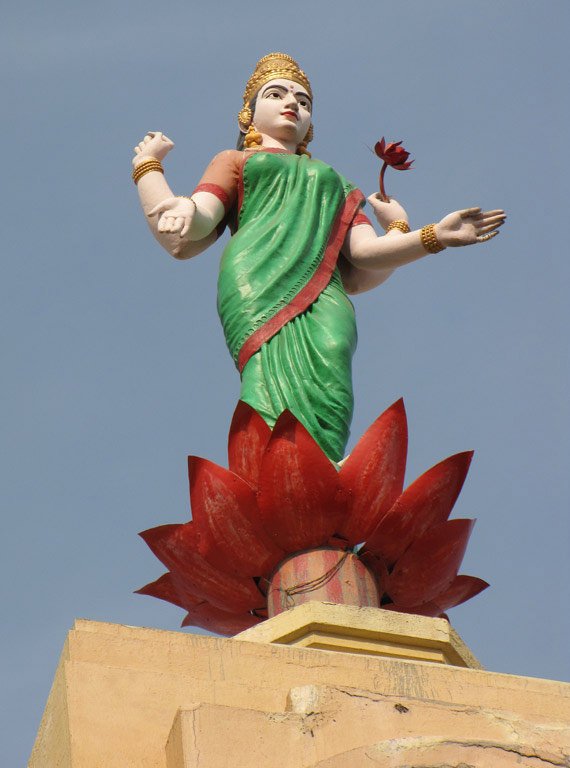
Did the three partners travel a lot, did they have exposure to other geographies, or were they restricted to India?
Yes, yes they used to travel. As these office buildings were ongoing, there were other buildings also being built, like the housing colony known as Mafatlal Park (now called Sea Face Park), on Warden Road. Mafatlal Bungalow at Altamount Road was also done by my father. Mafatlals were one of the major clients.
At Mafatlal Park, there were lock-in garages to each flat, and a separate service staircase. Each building had two flats per floor, so the service staircase used to allow the staff to go directly into the rear side of the flat which led to the staff quarters, kitchen, and then you come into the main flat. The kitchens had a washing place outside, including a garbage chute in those days, in the 1930s! The garbage would collect on the ground level in a separate chamber, from where it was taken out. In addition to this, there was a huge garden in the centre, a swimming pool, and a small office for the entire colony, which is used as an office for the society even today.
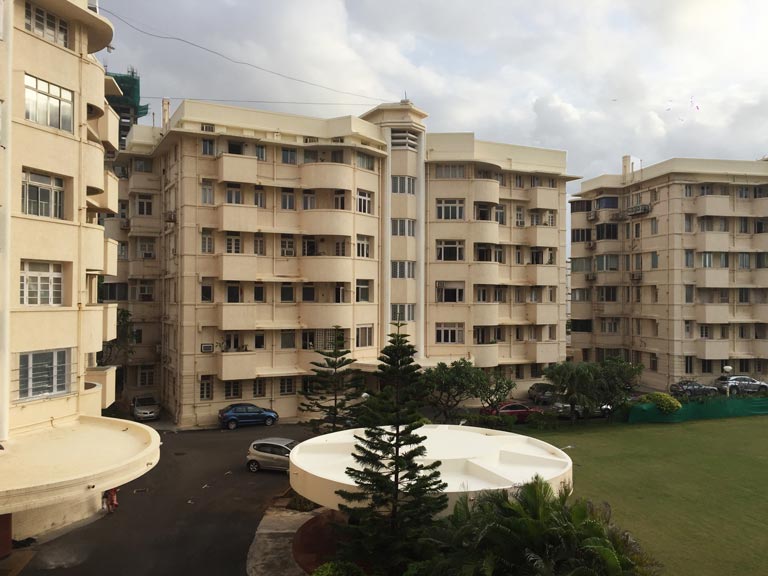
Interesting. Why were all the buildings restricted to around five or six storeys? That was a law?
The lands mostly were given by the Collector, either sold as freehold land or given on lease. So there were a lot of restrictions, water supply and other things. In those days there were few piled foundations. Concrete was not developed as such, so there were open foundations. Therefore, the load bearing factor was governing the total height of the buildings. Even in the case of New India Assurance, they are all open foundations. That is one of the reasons the walls were very thick at the ground level. The thickness was nearly a metre. Nowadays a metre is unheard of. In those days, the walls would be 3-3.5 ft at the ground level and then would keep getting reduced per floor.
Another few things you will see in those buildings is the concern about the weather. So protection from the sun and rain was achieved by chajjas or weather shades. They used to protect the window from getting the sun directly inside the room, even in the afternoons. There was no air-conditioning in those days, so good ventilation systems were achieved by these windows, placed in bigger sizes, and facing the wind directions. Nowadays we close all the windows and run the air-conditioner.
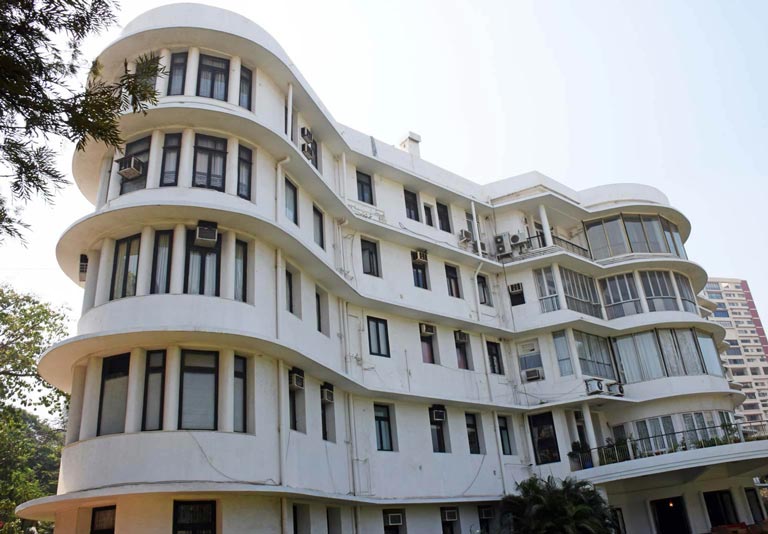
What was the relationship between Master, Sathe & Bhuta, Merwanji, Bana & Co., Gregson, Batley & King – you know all the contemporary firms at that time. Were they friends?
Master had a very good connection with other architects. He was also interested in teaching the younger generation, so he became a principal of J.J. College of Architecture in the 1940s [from 1943-48]. And he was interested in the profession, so he became President of the Indian Institute of Architects (IIA) around 1948.
In those days, anybody could design a building, any engineer or mistree. An ordinary carpenter could design a building and start doing the work. This was not acceptable to these professionals, so they started the movement of having a law to control the architectural profession. Master was the main person to push the government to make this compulsory, that the designs of all the buildings must be done by architects.
And that is how, when Master was principal in J.J, he had a connection in the Bombay University. He was the root cause to start the degree course in J.J College of Architecture. And in 1952, the first batch [of architecture students] was taken in as a degree college.
So to go back to work, we talked about public buildings. And we talked about residential complexes. Were there others? Just to establish the strength of their work.
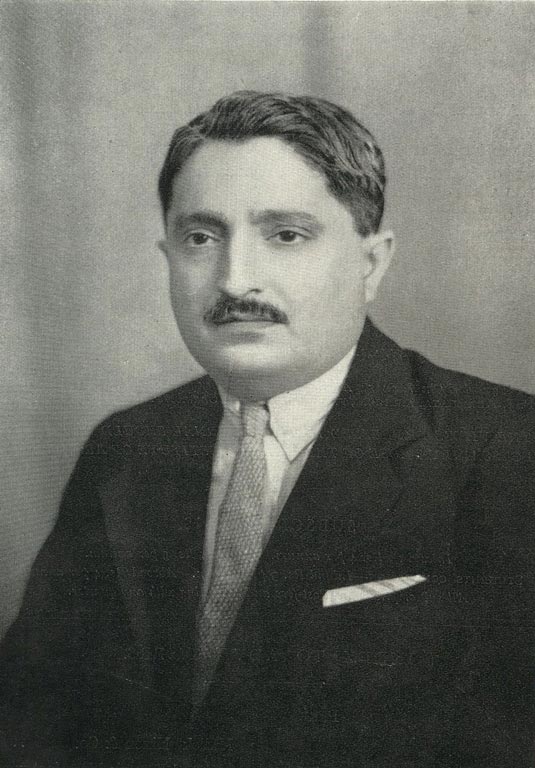
Master, Sathe & Bhuta did the assembly hall for the Assam government in Shillong. Shillong was the capital of the Assam Province at the time. In Delhi, they did the Reserve Bank of India’s main building. They did the Mandovi Hotel in Goa. Then among industrial works they did a lot of textile mills. Mafatlals were one of their major clients, and commissioned mills in Navsari, Surat, Ahmedabad, Dewas. They have also done hospitals – Bhatia Hospital in Tardeo, Civil Hospital, Ahmedabad, Kamla Nehru Hospital in Allahabad.
They also did laboratories just after Independence – two National Laboratories; the National Physical Laboratory in New Delhi and the National Chemical Laboratory in Pune.
They also did a lot of institutional and religious works free of charge. They never took a single penny from a religious building or an educational building.
Then they have done a lot of schools. In Khar there are a few schools, Kamla High School, Vidya Mandir High School, now known as R.V Technical High School. Then in Andheri too, but that was much later on – Andheri College and Lady Vissanji School.
What is the most significant impact your father had on you professionally?
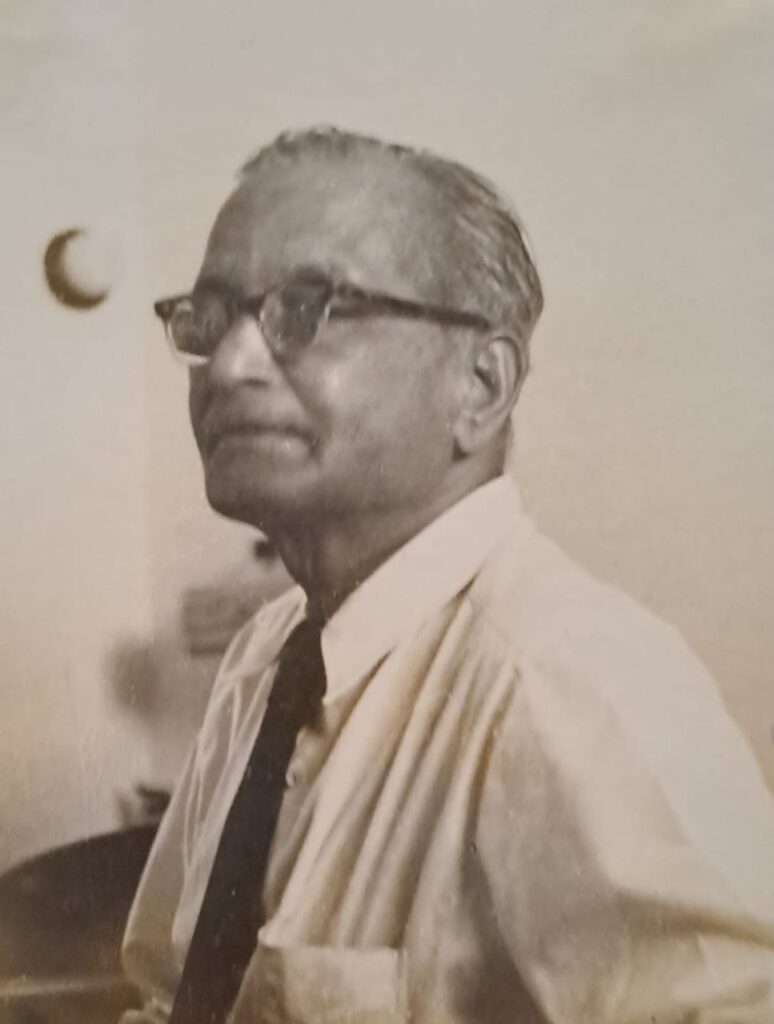
As a student of architecture, his first advice and insistence, I would say, was that I go around the city – right from Sion to Colaba – and see what are the buildings there, how they are, which buildings I like, which ones I find some fault in. In my first vacation after SSC [Secondary School Certificate], I spent nearly three weeks going all around Bombay, including the Rajabai Tower – in those days you were allowed to go up to the terrace of Rajabai clock tower. I had a box Kodak camera, with which I have taken photographs of a lot of places in Bombay.
So, did you join the firm after you graduated?
Yeah, but before that in all my college vacations I was training in the office. My first year training was under Vanu Bhuta [G.M. Bhuta’s son], and he taught me how to handle the pencil, how to rotate the pencil in your fingers.
When I joined, I was asked to do the drawings, and he was doing the New India Insurance Company building on S.V. Road. The main aspect of the drawing was to take care of the weather conditions.
And he [Vanu Bhuta] asked me to do drawings of the building’s staircase railing, but my drafting was not approved by him, because in some places the darkness and lightness of the line was not followed properly. He said, do it again, until you improve your pencil work.
Can you explain what you meant by rotating the pencil?
Yes, when you hold a pencil in your hand, you have to rotate it. So when you are drafting, the lead is equally roughed off and the pressure remains equal. If you keep holding it in a fixed position, the pressure might change. He was the one to teach me that technique.
What was the process of making copies, and printing?
We had one peon, Mr Jayram Rao. He used to carry the tiffin to the office, then he started working there, and became permanent. He used to take care of the drawings.
In those days, printing was a long process – the drawings had to be exposed to the sun on a blueprint paper. It had a chemical treatment on it and was exposed in a glass frame to the sun for nearly six hours. After that, the coated paper was dipped in water for 6-8 hours, then dried on a string for a day or so. The drawings also had colour washes – proposed work to be shown in pink, work to be demolished to be shown in yellow, the water supply lines, the electrical cable coming in, all these things were to be shown on the municipal drawings.
He was an expert in doing all those things. So in the beginning, I used to work with him. He used to supervise my work.
As a person, what were the qualities you admired about your father?
In my school days, I was very interested in sports and paid less attention to my studies. I was sent to Ratnagiri as gurugrahi, meaning I was staying with a teacher for three years, who was also teaching in the same school I was given admission to. For the first two and a half years, there was no electricity in the whole town. I used to do the work with a kerosene lamp. Everything had to be done by myself, right from washing my own clothes to preparing my own bed. When I came back, I was told now you can join the architecture course, but first you go and see the city, and that’s how I got in.
If you look at the last two, three decades, what is your comment on the state of architecture today? How do you respond to what the newer people are doing?
Yeah, the new commercial buildings are all glass houses. I’m very much disappointed that they are not taking care of natural things, like weather conditions. Using glass to such an extent is absolutely no good.
Coming to the residential buildings, these are all coffins according to me. There is no proper planning, and that’s one of the reasons I did very select residential buildings for builders.
And what would be your message to architecture students of today?
Number one, study the existing architecture in the town you are in. Study what is there in the present and diagnose that, find out if there are any drawbacks. And that should be done by site visits. Another thing, get practical training at site. How to do brick work, how to do plaster – do it yourself. I was employed as a worker on site during my vacations. I have even done the carpentry by my own hands, and that is the most important thing. Then when you do the drawings, you know how it is going to be executed.
This blog is based on an extensive interview with Mr Sathe by Atul Kumar and Nityaa L. Iyer of Art Deco Mumbai Trust, held at Kamla Raheja Vidyanidhi Institute for Architecture and Environmental Studies (KRVIA), Mumbai, on 20 July 2017.

